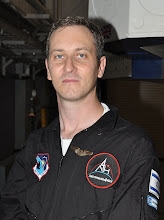Sure, there were delays - weather, a ship, more weather, and finally a small window with the right conditions.
It was thrilling to see this, even in the light of the Augustine report. Whatever the next ten years are going to look like, this is a great step in the Constellation program.
Alongside the thrill of watching this live, there were other feelings of nostalgia. Both for the Apollo program which resembles this part of Constellation more than the space shuttle (rocket, capsule which lands at sea), but also for the space shuttle. As a kid growing up, the Columbia, Challenger and later Discovery, Atlantis and Endevour brought us closer to these amazing shuttles on Startrek and Star Wars, at least in shape, letting our imagination of what will be when we grow up run wild.
All in all, great success and applause to everyone at NASA making this (and whatever will follow) happen.
Videos after the jump...






 Space Shuttle Launch Poll Results
Space Shuttle Launch Poll Results












